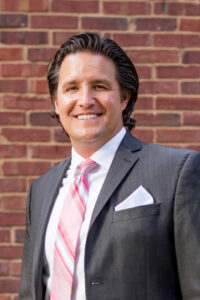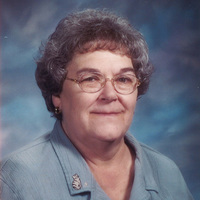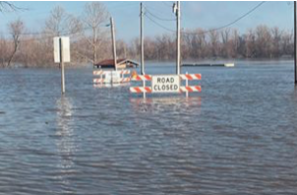
McPherson College president
Katie Grose is a second-generation band teacher from Jefferson West High School in northeast Kansas. I heard her story last spring when she was at McPherson College supporting our band program. Her dad was a band teacher and so is her brother. A few years ago, Katie had reservations when her daughter wanted to carry on the family tradition and go into teaching.
The sad fact is nobody wants to be a teacher anymore. It’s especially true for young people trying to figure out what they want to be when they grow up. Becoming a teacher isn’t even on their list. It’s not on their parents’ list, either. When polled in 2018, 54 percent of parents nationwide said they did not want their child to become a teacher. Even educators themselves have been advising young people not to enter the profession.
As students headed back to school this fall, Kansas school districts continued to face a teacher shortage of epic proportions. Multiple school districts started classes without the full complement of teachers they needed, and some districts had literally no applicants for open positions this year—particularly in elementary and special education.
From Hutchinson to Meade to the suburbs of Topeka and Kansas City, district superintendents contend that teacher recruitment is more challenging today than at any time in the last two decades. And the recent report on teacher openings by the Kansas State Board of Education confirmed that teaching vacancies are up 27 percent over last year. The Kansas school year started with 815 open teaching positions. Considering the last 20 years of political hostility toward teachers, it’s not hard to figure out why.
It doesn’t get much clearer—kids in Kansas don’t want to be teachers. We have to change that.
Two years ago, with the teacher shortage making headlines and the number of teacher education graduates remaining flat, McPherson College developed solutions to address the problem. We started with the launch of an accelerated teacher education program, which includes an innovative curriculum that gets teacher education graduates into school districts faster and at a higher rate of pay.
Under our program, students can earn a combined bachelor’s and master’s degree in just four years. In addition, our program has endorsements in special education and English to Speakers of Other Languages (ESOL), which are both important needs in Kansas schools. This program saves students thousands of dollars. And—because teacher salaries are generally based on the highest level of education obtained—first-year teachers from our accelerated program typically earn a higher starting salary than first-year teachers with only a bachelor’s degree.
We’ve also launched EdChat, an annual event for high school students interested in becoming teachers. In the last two years, over 100 students participated in workshops on the latest trends in elementary and secondary education, gaining insights from national and state experts.
The feedback from our EdChat events is encouraging. Participants tell us they’ve gone home fueled with new ideas and eager to earn their education degree. They look forward to having classrooms of their own one day and can’t wait to start their careers.
These steps by McPherson College are just the beginning. There’s a lot more we can do as a college (and collectively) to get kids excited about becoming teachers. Twenty years of political squabbling forced an entire generation of Kansas students to grow up thinking that becoming a teacher was a bad idea. Thankfully, the battles over school funding are civil these days, and now maybe we all can move forward with respect and appreciation for teachers so they can focus on learning in their classrooms rather than defending their life’s work.
At McPherson College, we’re changing the conversation about teachers and promoting the idea that teaching is a rewarding career path. We hope you’ll add your voice to this conversation.
Luckily, Katie Grose’s daughter decided to become a teacher and is the third generation of her family to direct bands in the state of Kansas. Let’s do more so that Katie’s grandkids will want to be teachers too — because when kids don’t want to become teachers, it’s the adults who have failed. We can’t afford to fail.






















 By JAMES BELL
By JAMES BELL


